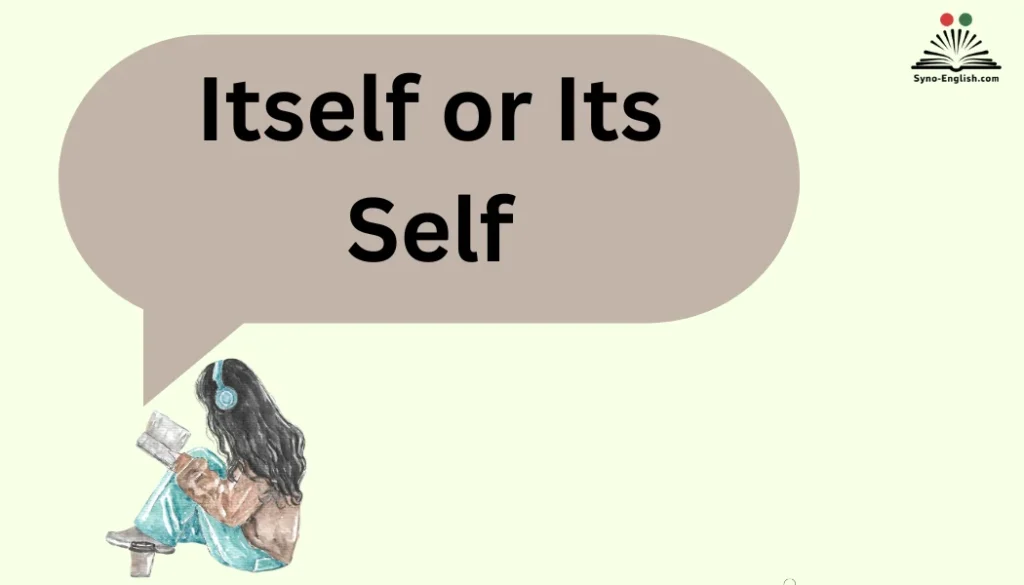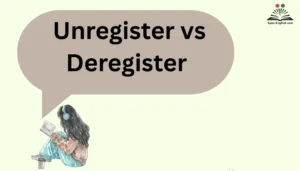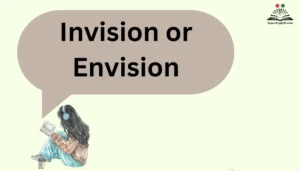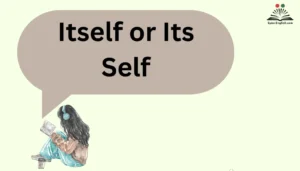In English, even a small word can shift the meaning of a sentence, and that’s where the debate about Itself or Its Self becomes essential for clarity. When I began writing professionally, I discovered how much nuance shapes communication and influences credibility.
The debate between these two forms still confuses readers because they seem identical yet play very different roles and applications in sentences. Mastering this subtlety helps any writer use the correct form in the right context, preserving precision and confidence in expression.Over time, I developed a personal guide to avoid grammar traps involving its, it’s, and reflexive pronoun issues.
The usage of these terms varies—itself works as a reflexive marker, while its self highlights individuality, often seen in older histories or philosophical discussions. Knowing these distinctions adds clarity and purpose to your writing, ensuring that subtle shifts in tone or meaning remain intentional rather than accidental.
Hook: Why the Confusion Around “Itself” and “Its Self” Matters
You’ve probably seen a sentence like this before:
- The machine operated all by its self.
- The machine operated all by itself.
One is correct in modern English, the other raises eyebrows. The difference is subtle, but getting it wrong can make your writing look careless.
In professional writing, job applications, academic papers, or even emails, these small missteps can cast doubt on your command of English. And in philosophy or literature, using the wrong form might even change the meaning entirely.
Let’s cut through the noise and make the distinction crystal clear.
The Core Difference at a Glance
Before diving deep, here’s a quick snapshot:
| Term | Function in English | Example Sentence | Notes |
| Itself | Reflexive pronoun (grammar rule) | The cat licked itself. | Standard English usage |
| Its self | Philosophical/literary concept of identity | Philosophers debated the nature of its self. | Rare outside academic or spiritual contexts |
| Its | Possessive pronoun | The company changed its logo. | Shows ownership |
| It’s | Contraction of it is or it has | It’s raining outside. | Never possessive |
In short:
- Use “itself” in everyday grammar.
- Reserve “its self” for discussions of philosophy, religion, or identity.
- Don’t confuse its (possessive) with it’s (contraction).
What Is a Reflexive Pronoun?
To understand “itself,” you need to grasp reflexive pronouns.
Definition: Reflexive pronouns are words that refer back to the subject of the sentence.
List of reflexive pronouns in English:
- myself
- yourself
- himself
- herself
- itself
- ourselves
- yourselves
- themselves
Examples:
- She taught herself Spanish.
- The dog entertained itself with the toy.
- We prepared ourselves for the challenge.
Notice how the subject and the object are the same entity. Reflexive pronouns keep the action within the subject.
Reflexive pronouns also add emphasis:
- I’ll do it myself.
- The CEO herself attended the meeting.
This emphatic use highlights importance, not reflection.
Correct Usage of Itself in Modern English
“Itself” has two primary functions in everyday English: reflexive and emphatic.
Reflexive Usage
When the subject performs an action on itself.
- The robot shut itself down.
- The country isolated itself from the rest of the world.
Here, itself prevents ambiguity and makes sentences flow naturally.
Emphatic Usage
When you want to stress or highlight the subject.
- The professor himself corrected the exam papers.
- The city itself was a masterpiece of architecture.
In these cases, itself adds weight and draws attention.
Common Everyday Contexts for Itself
- Talking about animals (The horse hurt itself).
- Referring to objects (The book explains itself).
- Highlighting independence (The computer fixed itself).
Rule of thumb: In grammar, always default to itself—not its self.
The Meaning of Its Self in Philosophy and Spirituality
Now let’s turn to the less common form: its self.
Unlike itself, which is a reflexive pronoun, “its self” is a compound phrase combining the possessive its with the noun self. It doesn’t serve as a reflexive pronoun. Instead, it’s about identity, essence, or selfhood.
Philosophical Usage
Philosophers often discuss concepts of the self:
- The self as an individual’s essence.
- The self as distinct from external perception.
Example:
- The mind contemplates its self in moments of reflection.
Here, its self means the self that belongs to it, not a reflexive action.
Religious or Spiritual Usage
Religious texts, especially those dealing with soul or selfhood, sometimes use its self.
Example:
- The spirit reveals its self through acts of compassion.
Why This Causes Confusion
Because itself and its self look almost identical, many mistakenly think they’re interchangeable. But one is strictly grammatical (itself), while the other is conceptual (its self)
Common Mistakes and Misconceptions
Even strong writers fall into traps with these terms. Here are the biggest ones:
- Mistake 1: Using its self instead of itself in grammar.
- ❌ The dog chased its self around the yard.
- ✅ The dog chased itself around the yard.
- Mistake 2: Writing it’s self (incorrect double error).
- ❌ The computer updated it’s self.
- ✅ The computer updated itself.
- Mistake 3: Mixing up its and it’s.
- ❌ Its going to rain later.
- ✅ It’s going to rain later.
Quote to Remember
“Grammar is not just rules; it’s the architecture of clarity.”
Breaking Down “Its” vs “It’s” Clearly
This confusion deserves its own spotlight.
| Word | Meaning | Example | Memory Trick |
| Its | Possessive (belonging to it) | The company raised its standards. | Like his or hers—no apostrophe |
| It’s | Contraction (it is / it has) | It’s been a long day. | Expand to check: it is or it has |
Quick test: If you can replace the word with it is or it has—use it’s. If not, use its.
Practical Grammar Exercises
Here’s a short test to check your grasp:
Fill in the blanks with the correct form:
- The computer fixed ___ without outside help.
- The spirit revealed ___ true nature in the text.
- Every country must define ___ identity.
- I believe ___ going to rain soon.
Answers:
- itself
- its self
- its
- it’s
Quick Reference Guide
Here’s a diagram-style summary you can use as a cheat sheet:
- Itself → reflexive pronoun (The cat licked itself).
Its self → philosophical/religious phrase (The mind reflects on its self). - Its → possessive pronoun (The car lost its wheel).
- It’s → contraction (It’s raining today).
Case Study: Real-World Examples
Case 1: Academic Writing
A philosophy paper might say:
- Consciousness contemplates its self.
Here, its self explores the concept of identity.
Case 2: Business Writing
A corporate report might say:
- The company restructured itself to remain competitive.
Using its self here would look incorrect and unprofessional.
Case 3: Literature
Writers sometimes bend the rules for stylistic effect:
- The forest hid its self in shadows.
While poetic, this is intentional deviation, not standard grammar.
Conclusion
Understanding the difference between Itself or Its Self is more than a grammar rule—it’s a skill that reflects clarity and awareness in writing. When writers recognize how each term functions, they strengthen the precision and emotional depth of their expression. Itself serves as a reflexive pronoun emphasizing the subject’s action, while its self is rarely used but conveys individuality or philosophical thought. Recognizing these nuances gives your writing purpose and accuracy, avoiding confusion for readers who depend on context for meaning.
Language thrives on precision and the careful balance between nuance and usage. Whether crafting essays, professional correspondence, or creative works, knowing when to use itself or its self reinforces your credibility and mastery of English. The true beauty of language lies not just in rules but in understanding their evolution, applications, and emotional tone. With the right tools, grammatical awareness, and consistent practice, you can confidently navigate these distinctions and use them to shape writing that feels both thoughtful and authentic.
FAQs
What is the main difference between “itself” and “its self”?
“Itself” is a reflexive pronoun used when the subject and object are the same. “Its self” refers to individuality or selfhood but is rarely used today.
Why do people confuse “itself” and “its self”?
They look nearly identical, and the space between “its” and “self” changes the meaning, leading to confusion in context.
When should I use “itself”?
Use “itself” when emphasizing that the subject performs an action on itself, such as “The cat cleaned itself.”
. Is “its self” grammatically correct?
Yes, but it’s uncommon. It appears mainly in philosophical or historical texts where “self” refers to a deeper sense of identity.
Can “its self” be used in modern English?
Rarely. Most modern writers prefer “itself” because “its self” sounds outdated or overly formal.
How can I remember when to use “itself”?
Think of “itself” as one complete word meaning “the thing acting on itself.” No separation is needed in everyday use.
Does using “its self” make my writing wrong?
Not necessarily, but it can make your writing sound awkward unless you’re discussing identity, consciousness, or philosophy.
Are there other reflexive pronouns like “itself”?
Yes. Examples include “myself,” “yourself,” “himself,” and “herself.” All reflect an action directed back at the subject.
How does grammar affect credibility in writing?
Proper grammar builds trust. Readers view accurate writing as thoughtful and professional, especially in formal settings.
What’s the best way to master such subtle distinctions?
Read widely, observe language in context, and use trusted grammar guides to strengthen understanding through practice and application.

Emma Brooke is a passionate English educator, writer, and language enthusiast with over a decade of experience helping learners master the nuances of the English language. At SynoEnglish, she blends practical grammar advice with real-world communication tips to make English easier, clearer, and more enjoyable for readers of all levels.



